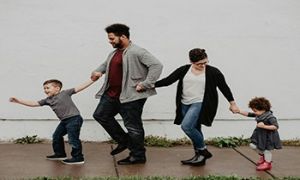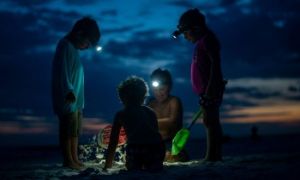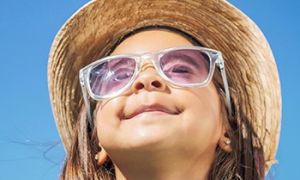The EYLF explains assessment for children’s learning as the process of gathering and analysing information as evidence about what children know, can do and understand. It is a key part of an ongoing cycle that includes planning, documenting and evaluating children’s learning. And one of the most effective forms of such documentation is the learning story. The following article provides information on What Is A Learning Story, the Components Of A Learning Story, Writing A Learning Story, What To Include In A Learning Story and more.
What Is A Learning Story
Learning stories are narratives created from structured observations, designed to provide a cumulative series of pictures about a child’s learning. During their observations, educators collect ‘critical incidents’ or moments that seem significant for a child. By analysing several of these through narrative, educators can arrive at an understanding of the trajectory of the child’s learning as well as the pattern of their learning style and dispositions. A learning story can exist on its own though it is usual for educators to link together several consecutive narratives for a fuller picture of the child’s learning. A series of learning stories is often kept in a portfolio alongside examples of children’s work. This enables teachers to review learning and identify continuity and opportunities for development.
Components Of A Learning Story
The three main components of a learning story are:
- Narrative – this is the description of the ‘critical moment’ and its contextualising in time and space; thus if a learning story is about a child learning to tie shoelaces, the narrative would not only give an account of what happened but where and when it happened. Such an account would describe the child’s actions leading up to the moment and would also include interactions with peers and adults at the moment and what followed.
- Analysis – this aspect of a learning story involves making inferences from the critical moment, important takeaways of the child’s learning patterns, styles and dispositions; the process of analysis would also link the child’s successful action to other learning areas and trajectories like social, emotional, linguistic, gross motor, cognitive etc to arrive at a holistic picture of the child’s learning. Additionally, this component involves analysing the child’s development of skills and abilities over time, from a point in the past leading up to this moment of achievement.
- Planning – once the critical moment has been analysed, the educator used it to inform further curriculum decisions and interventions so as to reinforce and extend the child’s learning.
How To Write A Learning Story
Writing a learning story involves engaging in the following cycle:
- Noticing – Educators notice a range of things as they work with children so that they can build up the narrative component of the learning story; at the same time, they should look for ways to learn more about the child, their knowledge and strengths, and their unique ways of approaching learning.
- Recognising – educators identify the moments in a child’s actions that demonstrate learning and understand what learning has taken place; this process forms the basis of the analysis component of the learning story.
- Responding – this involves educators developing their responses to the analysis through further curriculum planning.
What Do Learning Stories Include?
- Descriptions of key behaviours or dispositions
- The learning that has taken place
- How learning relates to children’s interests and dispositions
- What steps might be taken to extend and support future learning
- Children’s interests, skills, knowledge and working theories
- The child’s voice, and a teacher’s response
- Setting learning goals (perhaps with the child)
- Links to the child’s family context
- Cultural knowledge and ways of learning
- Use of relevant languages appropriate to the child’s background
What Stories Should You Write About?
From the components and inclusions of learning stories, it is evident that this is a detailed and time-intensive form of documentation. As such it may not be practical for every piece of learning that you notice or recognise in your setting. Essentially when deciding which learning to write a story on, check whether there it will present opportunities for reflection and planning for the learning to continue. Thus you can consider writing learning stories:
- when you are emotionally invested. Rather than planning to write for an allocated set of children or following a schedule, when you write about learning with which you have an emotional connection – for example, a child’s making a card for a grandmother, because you are one yourself – your planning is likely to be more meaningful.
- as close as possible to the time of the learning event in order to be most responsive to children’s learning, and also to share stories with all teachers in the setting so that every teacher can support this learning.
- about the learning that is valued in your ECE setting; for example, if your service in a water scare location, it is crucial for children to learn water conservation practices.
- about children’s self-initiated work in order to understand children’s interests and motivations for learning. However go beyond just identifying a child’s interests – like sand play - by trying to find out what the children are thinking when engaged in that particular activity, like when the child is scooping and moulding with sand.
- about larger projects that include several children to explore social relationships and to observe the different roles children assume in the development of group interests.
- that show children demonstrating learning dispositions like curiosity, persistence and creativity, cooperation, confidence, commitment, enthusiasm, imagination and reflexivity or developing working theories for example to meet key Learning Outcomes in EYLF.
How To Analyse Learning In A Learning Story?
Analysing the learning in a learning story is key to its use for the purpose of assessment. Some ways to do this are:
- Making the learning, rather than the activity visible – for example, if a learning story set in a carpentry class, talks about how a child rejected a hole as too small for a screw and then kept trying to drill a hole of the right size to fit the screw, it should identify and highlight a child’s knowledge of shapes as well as comparison of sizes such as smaller and bigger.
- Analysing the skills and dispositions demonstrated in this learning, for example, the child’s persistence and resilience as they continue with the difficult task of making a hole in the wood to fit the screw.
- Trying to identify and positively describe the underpinning learning processes that children use, so as to present children as competent and confident learners. In the example above, such processes would be experimenting and hypothesising.
- Using appropriate headings for separate sections like analysis and planning so as to avoid tendencies to stay in the descriptive phase. When the analysis and planning components are absorbed into the narrative, learning is not really visible to children and families.
- Tracking the child’s learning over time and across subjects. This involves drawing the threads of learning together in order to explore the continuity of the course of the child’s learning. One way to do this is to link separate stories or adding extra ‘chapters’ to existing stories to show the development of dispositions in different situations. Reviewing portfolios periodically is another way educators can determine whether assessments demonstrate the breadth of children’s learning that go beyond art, literacy and numeracy to music, physical, social and emotional development too. When the same sort of learning story appears in different areas of the curriculum, the disposition can be considered more robust.
- Taking into account the whole child including their interests and the family’s culture, activities and aspirations for their child. This can be done by including the child’s voice in the story like by having them choose photographs and dictate words for captions. Yet another significant way to do this would be by inviting families to contribute their own voices to educators’ stories and to add stories from home. Educators should remember to document verbal contributions and reply to written comments made by families.
Seeking new perspectives on the learning that has occurred from teachers and families, as learning stories are strongest when a diversity of perspectives are included. This approach requires educators to be ready to see and value learning in different ways and use observations of children as the basis for professional discussions with colleagues and families.
Assessment For The Transition To School
Among the assessment uses of learning stories, one of the most important is to highlight links between learning that have taken place at an ECE setting and that which will occur at school. Learning stories can be used in the assessment for transition to school by:
- Making visible the child’s learning and progress over time in the ECEC setting.
- Developing the portfolio to illustrate for primary school teachers the strengths of the child as well as the ECE curriculum, activities and setting.
- demonstrating how the child’s learning links to the Learning Outcomes of the approved learning framework.
- Providing families with copies of a summative assessment report about their child’s learning would not only include the educator’s comments on the child’s literacy and mathematical skills and knowledge but also on learning styles, dispositions and any additional support that might be required for a successful transition.
Further Reading
How To Write A Learning Story - This is a guide on How to Write a Learning Story. It provides information on What Is A Learning Story, Writing A Learning Story, Sample Of A Learning Story, Linking To The Outcomes, Group Learning Stories and more.
Learning Story Templates - A variety of Learning Story Templates that can be used as part of a child's assessment.
Descriptive Words For Documentation, Observations and Reports - The following is a list of descriptive words that can be used while writing.
Guidelines For Documenting In Early Childhood Services - The following article provides strategies for documenting in an early childhood setting.
References:
How To Use Learning Stories In ECE Assessment, Education Hub
Belonging, Being and Becoming, EYLF, ACECQA



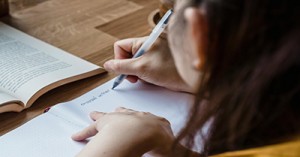

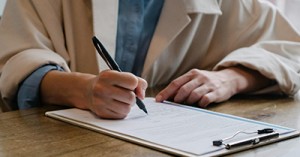

 Here is the list of the EYLF Learning Outcomes that you can use as a guide or reference for your documentation and planning. The EYLF
Here is the list of the EYLF Learning Outcomes that you can use as a guide or reference for your documentation and planning. The EYLF The EYLF is a guide which consists of Principles, Practices and 5 main Learning Outcomes along with each of their sub outcomes, based on identity,
The EYLF is a guide which consists of Principles, Practices and 5 main Learning Outcomes along with each of their sub outcomes, based on identity, This is a guide on How to Write a Learning Story. It provides information on What Is A Learning Story, Writing A Learning Story, Sample
This is a guide on How to Write a Learning Story. It provides information on What Is A Learning Story, Writing A Learning Story, Sample One of the most important types of documentation methods that educators needs to be familiar with are “observations”. Observations are crucial for all early childhood
One of the most important types of documentation methods that educators needs to be familiar with are “observations”. Observations are crucial for all early childhood To support children achieve learning outcomes from the EYLF Framework, the following list gives educators examples of how to promote children's learning in each individual
To support children achieve learning outcomes from the EYLF Framework, the following list gives educators examples of how to promote children's learning in each individual Reflective practice is learning from everyday situations and issues and concerns that arise which form part of our daily routine while working in an early
Reflective practice is learning from everyday situations and issues and concerns that arise which form part of our daily routine while working in an early Within Australia, Programming and Planning is reflected and supported by the Early Years Learning Framework. Educators within early childhood settings, use the EYLF to guide
Within Australia, Programming and Planning is reflected and supported by the Early Years Learning Framework. Educators within early childhood settings, use the EYLF to guide When observing children, it's important that we use a range of different observation methods from running records, learning stories to photographs and work samples. Using
When observing children, it's important that we use a range of different observation methods from running records, learning stories to photographs and work samples. Using This is a guide for educators on what to observe under each sub learning outcome from the EYLF Framework, when a child is engaged in
This is a guide for educators on what to observe under each sub learning outcome from the EYLF Framework, when a child is engaged in The Early Years Learning Framework describes the curriculum as “all the interactions, experiences, activities, routines and events, planned and unplanned, that occur in an environment
The Early Years Learning Framework describes the curriculum as “all the interactions, experiences, activities, routines and events, planned and unplanned, that occur in an environment